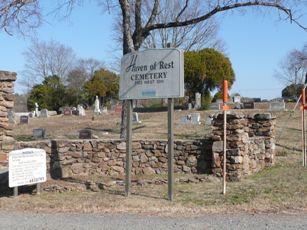ABSTRACTThis lab provides a rich and flexible version of widely used demography exercises that have been previously based on data collected from cemeteries. This lab teaches life tables and survivorship curves. Over two lab periods, small student groups develop and answer questions comparing the survival patterns of different groups of humans (e.g., groups that differ in geographic area, time period, gender, socio-economic background, or ethnicity). Data on human demography are available from three sources: (1) tombstones in local cemeteries that provide ages at death, (2) on-line cemetery records, and (3) census records that provide the numbers of people alive in different age classes. Students may also compare survivorship curves on the same groups generated by different data sets.
AUTHORSJanet Lanza1 1- Biology Department, University of Arkansas at Little Rock, 2801 South University, Little Rock, AR 72204; jxlanza@ualr.edu CLASS TIMETwo, two-hour labs. In the first lab period, students learn how to collect data and calculate survivorship curves and choose a comparison for their group to study; in the second lab period, students present the results of their projects. OUTSIDE OF CLASS TIMEApproximately three to four hours per student team to collect data, analyze data, and prepare a presentation for the class. STUDENT PRODUCTSA computer-generated presentation from each group is used to assess the students’ work. Students present (1) background that provides a rationale for their question, (2) their question and methods of answering the question, (3) their results, and (4) their interpretation of the significance of their results. A rubric for this assessment is provided to the students ahead of time. Logrank (Mantel-Cox) tests can be used to compare curves generated from two groups statistically. SETTINGThis lab can be completed in almost any classroom. To collect data, students need access to computers with internet access (their own or the school’s), local cemeteries, or census books in a library. The second lab period requires a room with a projector. COURSE CONTEXTThis lab can be taught at any time of the year. I use it in a junior-level ecology course with 12-20 students. Students work cooperatively in groups of two to four. INSTITUTIONThis lab is used at a public, metropolitan university. TRANSFERABILITYThis lab can be used in any general ecology course or an upper division ecology course. More extensive comparisons can be required in an advanced course. Statistical analyses can be required if the students have good statistical backgrounds. No specialized equipment is necessary. Using strictly electronic data reduces limitations imposed by geography, travel time and expense, and any mobility impairments students may have. One limitation of oral presentations can be laboratory time. In this case, posters can be used for presentations. DOWNLOADSDescription of other Resource Files:
ACKNOWLEDGMENTSThis lab builds on many “cemetery” labs written by other authors (e.g., Flood, N. 1993. Cemetery demography. In: Experiments to Teach Ecology. Edited by Jane M. Beiswenger. Volume 1. Ecological Society of America [http://tiee.esa.org/vol/expv1/expv1_toc.html]). Because the traditional labs have so few comparison options (e.g., only sex or time period), I tried to find additional sources of data. A newspaper article about historic cemeteries alerted me to the fact that many cemetery records are on-line. News about the 2010 census gave me the idea of using census data for this lab. I would also like to thank Karen Russ for help in accessing census data. Finally, I thank three anonymous reviewers for their thoughtful suggestions and Kathy Winnett-Murray for additional suggestions and much-appreciated encouragement. CITATIONJanet Lanza. 2 March 2012, posting date. Demography from physical cemeteries, "virtual cemeteries," and census dataTeaching Issues and Experiments in Ecology, Vol. 8: Experiment #1 [online]. http://tiee.esa.org/vol/v8/experiments/lanza/abstract.html |

Photograph of Haven of Rest Cemetery, an African-American cemetery in Little Rock, Arkansas. Photo: Janet Lanza full size image |
<top> | |